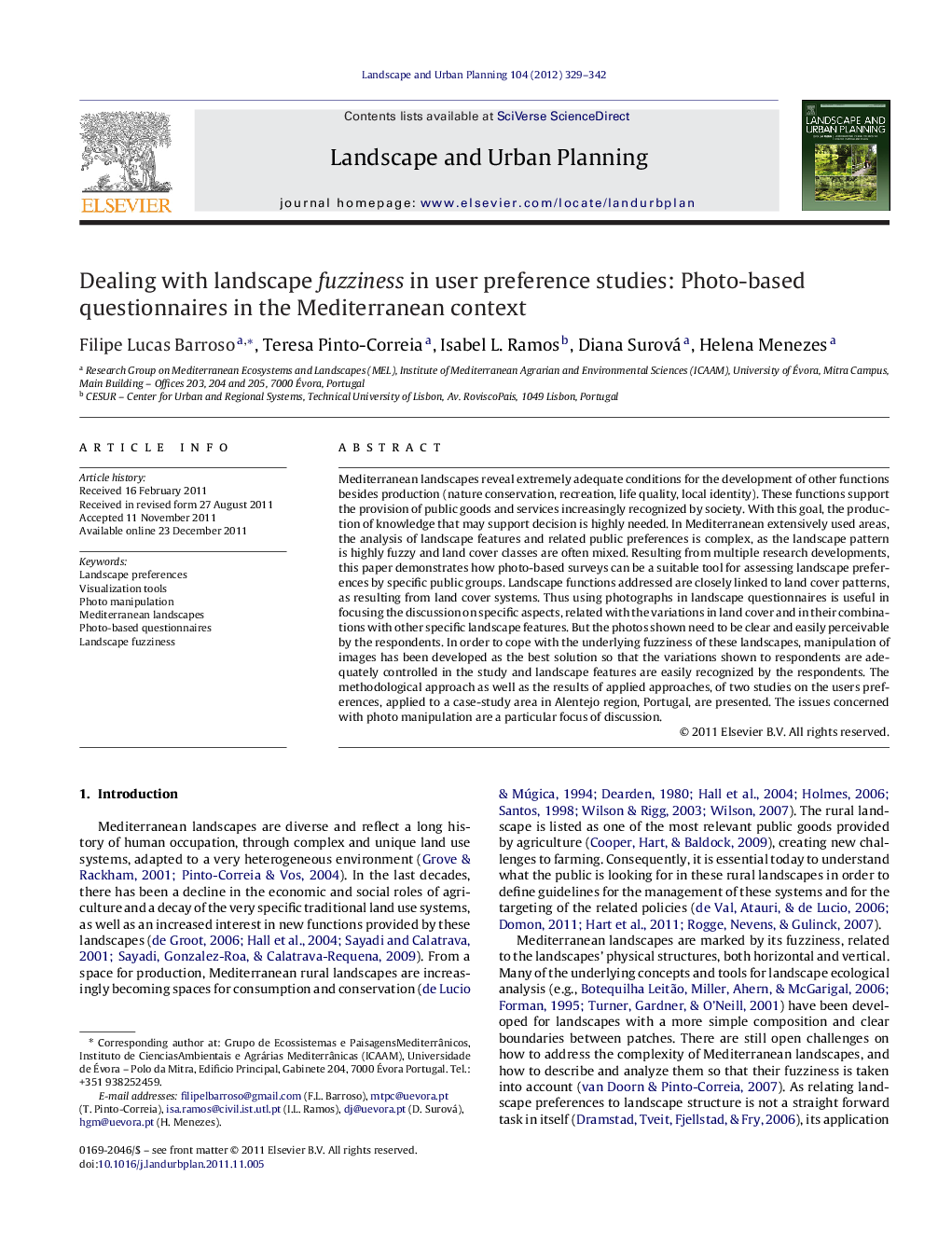| Article ID | Journal | Published Year | Pages | File Type |
|---|---|---|---|---|
| 1049659 | Landscape and Urban Planning | 2012 | 14 Pages |
Mediterranean landscapes reveal extremely adequate conditions for the development of other functions besides production (nature conservation, recreation, life quality, local identity). These functions support the provision of public goods and services increasingly recognized by society. With this goal, the production of knowledge that may support decision is highly needed. In Mediterranean extensively used areas, the analysis of landscape features and related public preferences is complex, as the landscape pattern is highly fuzzy and land cover classes are often mixed. Resulting from multiple research developments, this paper demonstrates how photo-based surveys can be a suitable tool for assessing landscape preferences by specific public groups. Landscape functions addressed are closely linked to land cover patterns, as resulting from land cover systems. Thus using photographs in landscape questionnaires is useful in focusing the discussion on specific aspects, related with the variations in land cover and in their combinations with other specific landscape features. But the photos shown need to be clear and easily perceivable by the respondents. In order to cope with the underlying fuzziness of these landscapes, manipulation of images has been developed as the best solution so that the variations shown to respondents are adequately controlled in the study and landscape features are easily recognized by the respondents. The methodological approach as well as the results of applied approaches, of two studies on the users preferences, applied to a case-study area in Alentejo region, Portugal, are presented. The issues concerned with photo manipulation are a particular focus of discussion.
► Assessing landscape preference through photo-based questionnaires. First study with real photos, second one with manipulated photos. ► The Fuzziness of Mediterranean landscapes – mixed composition of land cover classes together with fuzzy borders make it difficult for the participants to respond to differences between images. ► Digital manipulation of photos – manipulation makes it possible for a specific landscape pattern to become more visible and understandable for the respondents. ► Testing the use of photo-based questionnaires in the selected case study. ► The results of the two studies presented have contributed to improved knowledge in methods to assess landscape preferences in Mediterranean fuzzy landscapes.
